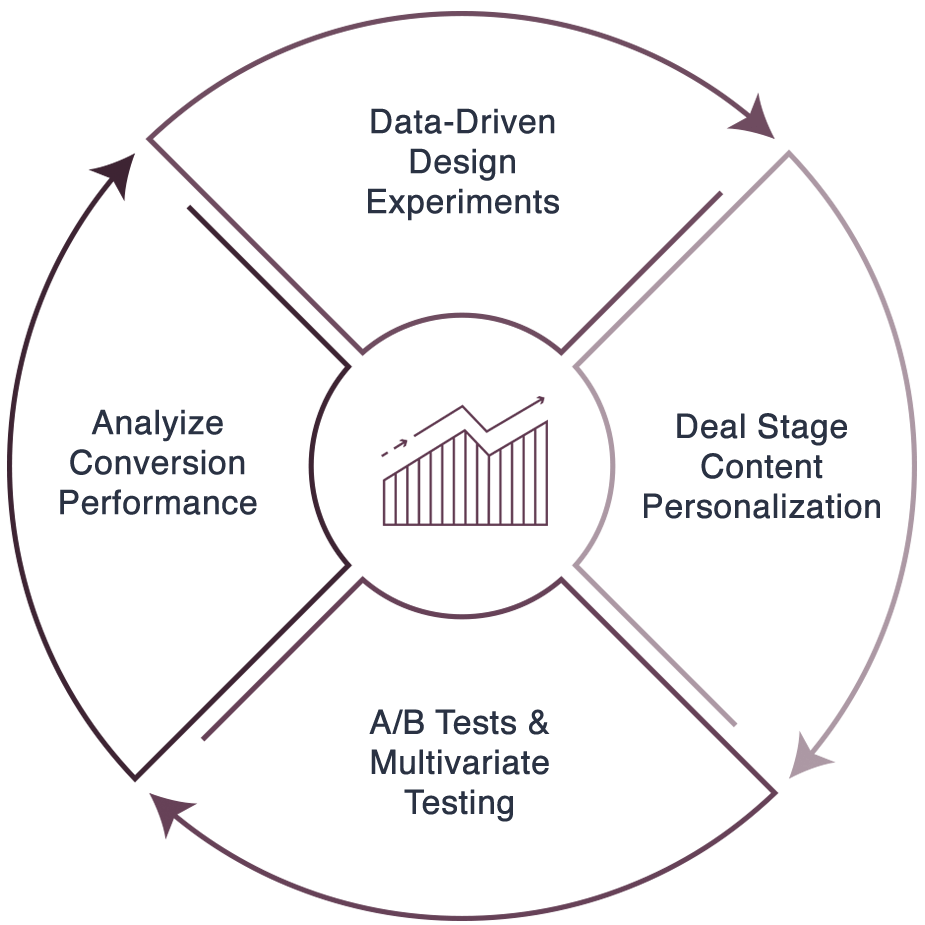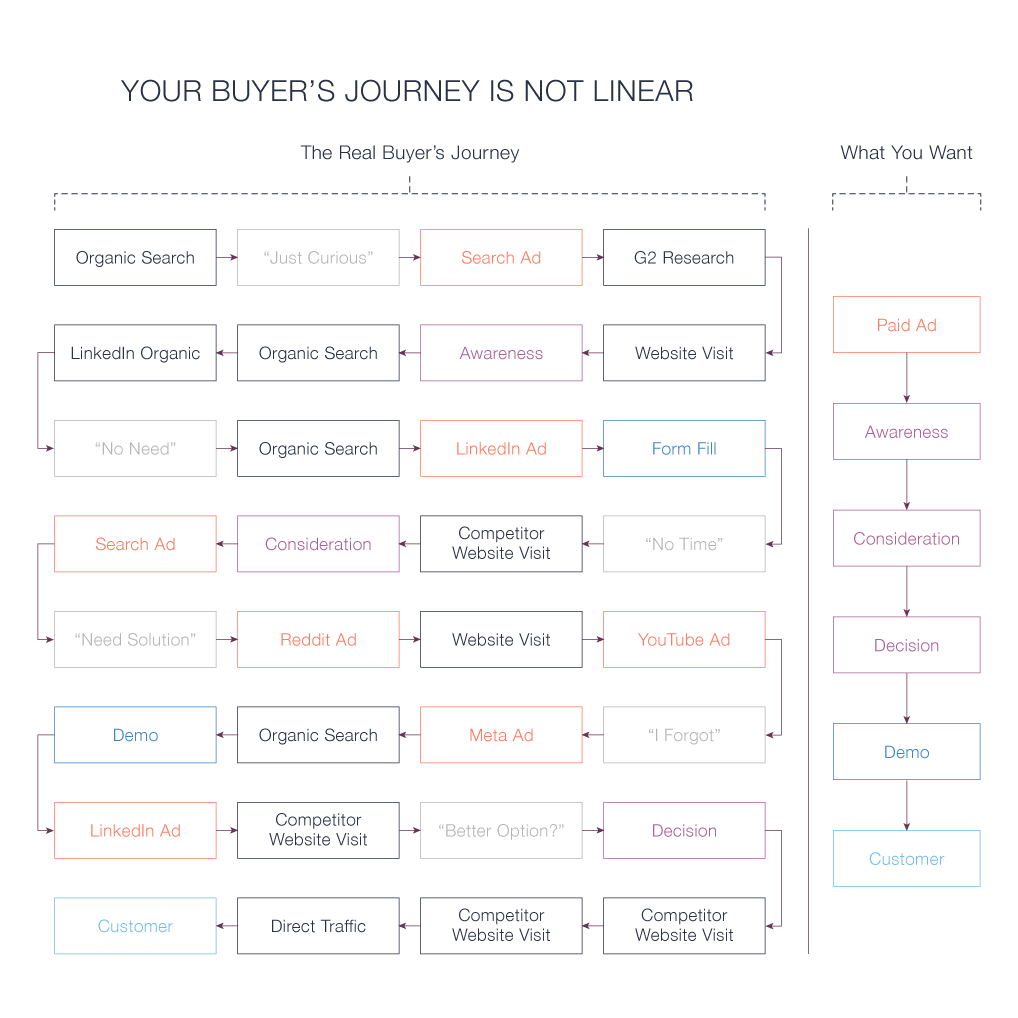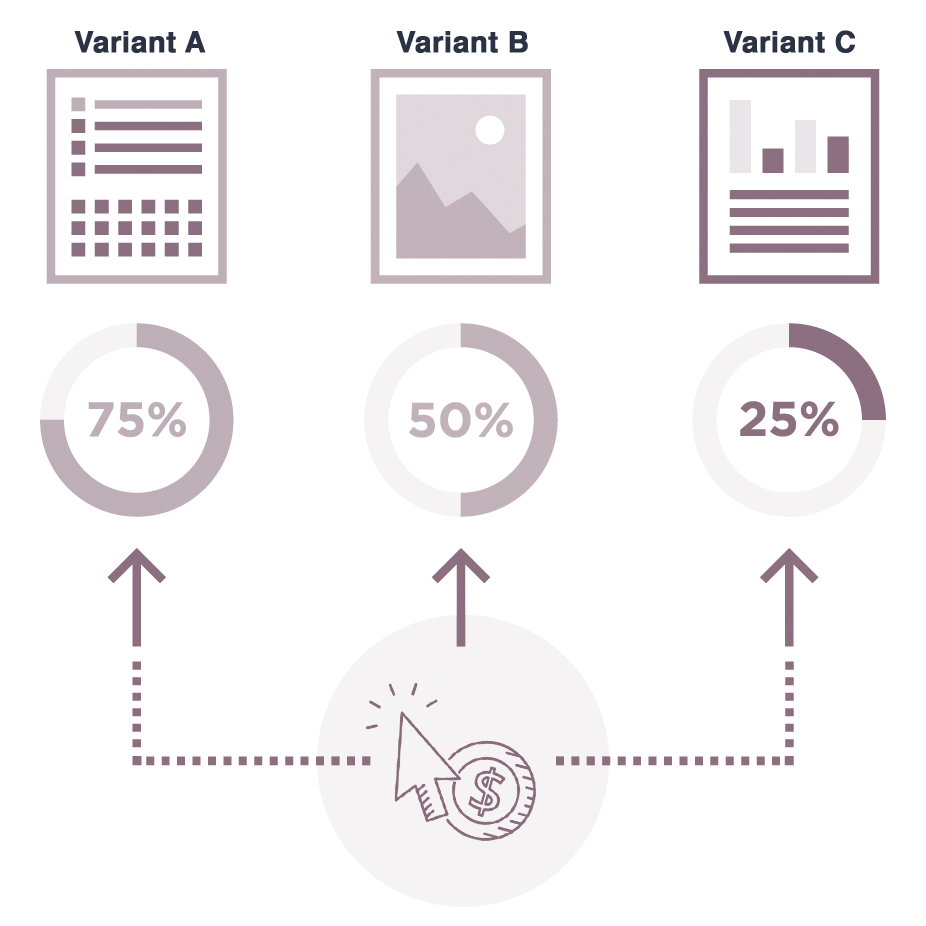Ecommerce conversion rate optimization is the key to turning visitors into buyers.
In this article, discover 10 strategies to improve your conversion rates in 2025. Learn how to boost performance with practical, actionable tips.
Key Takeaways
-
Ecommerce conversion rate is a key metric that measures the percentage of visitors completing desired actions, such as purchases or signups, making conversion rate optimization (CRO) essential for enhancing revenue and user engagement.
-
Factors influencing conversion rates include bounce rate, exit rate, average session duration, and product page optimization; understanding these metrics can help identify areas for improvement to drive conversions.
-
Mobile optimization is increasingly crucial, as a significant portion of retail sales comes from mobile commerce; ensuring fast-loading, responsive designs and simplified checkout processes can significantly boost conversion rates.
Understanding Ecommerce Conversion Rates

Ecommerce conversion rate is defined as the percentage of total users who complete a desired action, such as making a purchase. While the primary goal of any eCommerce business is to convert visitors into buyers, the importance of eCommerce conversion rate optimization goes beyond just making sales. Effective CRO can significantly enhance an eCommerce business’s revenue, improve website performance, and reduce abandoned cart rates.
Understanding the drivers, barriers, and hooks that influence conversion rates is crucial. Factors such as user experience and marketing strategies can cause wide variations in these rates. Therefore, having a well-defined strategy to influence conversion rates is more important than merely increasing traffic.
Moreover, a conversion is not limited to purchases alone. It can encompass various actions, like email signups and social media shares. This broad definition highlights the versatility and multifaceted nature of CRO in eCommerce.
Ecommerce conversion rate serve as a vital metric for assessing the performance of marketing and sales campaigns. They indicate how well your site is performing and where improvements are needed. Prioritizing conversion optimization is crucial for achieving better results and staying competitive in the market.
How to Calculate Ecommerce Conversion Rates
Calculating your eCommerce conversion rate is straightforward but crucial for understanding your site’s performance. The formula is simple: divide the number of conversions by the total number of visitors, then multiply by 100. For example, if your eCommerce site receives 1,000 visitors in a month and achieves 50 conversions, your conversion rate would be 5%.
Before calculating, define what constitutes a conversion for your business. This could be a purchase, an email signup, or any other desired action. Clear definitions ensure accurate data collection and analysis, reflecting true performance.
Tools like Google Analytics simplify tracking and calculating conversion rates. They offer detailed insights into visitor behavior, helping you understand user interactions and identify areas for improvement. Accurate tracking and analysis are the first steps toward effective and conversion rate optimization strategies.
What is a Good Ecommerce Conversion Rate?

Knowing what constitutes a good eCommerce site's conversion rate is crucial for benchmarking and goal setting. Generally, the average conversion rate falls between 1% and 2%. Higher rates indicate exceptional performance. For example, a rate above 3.2% places a store among the top 20% of Shopify stores, while 4.7% is within the top 10%.
Several factors influence these rates, including industry type and product pricing. For example, consumer electronics typically have lower conversion rates compared to other industries. Understanding these benchmarks helps in assessing the performance of marketing and sales campaigns and identifying areas for improvement.
Regional differences also play a role. For instance, the average eCommerce conversion rate in the UK is 4.1%, which is notably higher than the global average. Such variations highlight the importance of considering your target market when setting conversion goals.
A good eCommerce conversion rate is relative, depending on your industry, target audience, and specific business goals. Understanding these factors helps you set realistic benchmarks and work towards achieving eCommerce conversions, ensuring your eCommerce CRO remains competitive and profitable to increase eCommerce conversion rates.
Key Metrics Influencing Ecommerce Conversion Rates
Key metrics like bounce rate, exit rate, and average session duration influence eCommerce conversion rates. Understanding these metrics provides insights into user behavior and site performance, helping identify areas for improvement and guiding strategic decisions to boost conversions.
Traffic sources significantly impact conversion rates. For example, first-time site visitors often have lower engagement levels compared to returning website visitors thereafter. By analyzing these metrics, eCommerce businesses can optimize marketing strategies and user experience to increase conversion rates.
Bounce Rate
Bounce rate is a critical metric that indicates the percentage of visitors who leave a site after viewing only one page. A high bounce rate suggests that users aren’t finding what they seek, leading to immediate exits. This lack of engagement site visitors can be due to poor site navigation, irrelevant content, or slow loading times.
Reducing bounce rate can significantly enhance user engagement and increase conversion rates. Improving site speed, enhancing navigation, and providing relevant content can help lower bounce rates. A lower bounce rate indicates higher user interest, typically resulting in higher conversion rates.
Analyzing bounce rate using tools like Google Analytics offers valuable insights into user behavior and areas needing improvement. Addressing issues causing high bounce rates helps create a more engaging and conversion-friendly eCommerce website.
Exit Rate
Exit rate indicates the last page users view before leaving the site. A high exit rate on a particular page often points to issues such as content relevance, usability, or user expectation. Understanding exit rates helps businesses identify specific pages causing users to drop off.
Analyzing exit rates helps pinpoint areas for improvement in the customer journey. Addressing these issues, such as optimizing content or improving page design, enhances user experience and increases conversion rates.
Average Session Duration
Average session duration measures the amount of time visitors spend on a website, reflecting their engagement levels. Longer session durations generally correlate with higher conversion rates, indicating that users are more engaged with the site and its content.
Optimizing strategies to reassure users increase session duration, such as providing valuable content, improving navigation, and enhancing user experience, can boost conversion likelihood. Keeping users engaged longer improves the chances of converting visitors into customers.
Optimize Product Pages for Better Conversions

Optimizing product pages boosts conversions. High-quality visuals and well-written content significantly move conversion funnel, enhance user experience and increase sales. High-resolution images showcasing products from multiple angles help users make informed purchasing decisions.
Detailed product descriptions are equally important. They inform customers about the features and benefits, building confidence and encouraging purchases. Providing aspirational content and visual variants of product images allows customers to visualize how products fit into their lifestyles, driving desire and conversions.
Including customer reviews and ratings on product pages can further boost conversions. Social proof reassures potential buyers about product quality search functionality and reliability, making them more likely to complete a purchase.
Optimizing the product page involves a holistic approach to category page, focusing on visuals, content, and user experience. Ensuring product pages are informative, visually appealing, and easy to navigate can significantly increase conversion rates.
Enhancing Checkout Process to Reduce Abandonment

A frictionless checkout process is vital for lowering cart abandonment rates. Long and complicated checkout processes deter users, leading to higher abandonment rates. Streamlining the checkout process helps retain customers and encourages them to complete their purchases.
Enabling guest checkout allows users to purchase without creating an account, reducing friction and increasing conversion rates. Incorporating a progress bar in the checkout page and process guides users through multiple steps, enhancing the overall experience.
Trust signals, such as secure payment icons and privacy policy links in checkout form, reassure customers about transaction legitimacy. Offering various payment options and free shipping can also help retain existing customers, and decrease abandonment rates.
Recovering abandoned carts can be improved through timely and engaging follow-up emails. Reminding customers of their abandoned purchases encourages them to return online store and complete the transaction, boosting conversion rates.
Leveraging Social Proof and Customer Testimonials
Leveraging social proof, high quality product images, positive reviews and customer testimonials enhances trust and increases conversions. Including user reviews and testimonials on product pages significantly impacts purchasing decisions, as 93% of consumers state that online reviews influence their choices.
Effectively displaying social proof can increase customer loyalty, lifetime value and sales. Products with reviews have a 270% higher purchase probability than those without. User-generated content like product testimonials enhances brand credibility and encourages social trust through shared experiences.
Tools like Yotpo and Fomo help eCommerce brands embed reviews and show notifications, leveraging social proof to its fullest potential. Consistent A/B tests show that testimonials increase purchases, making them a valuable addition to any eCommerce site.
Implementing Effective Call-to-Actions (CTAs)
Effective call-to-actions (CTAs) guide potential customers through the conversion funnel. A clear, visually prominent CTA significantly boosts conversions by directing users toward making a purchase. Positioning CTAs above the fold ensures they are visible without scrolling, increasing their effectiveness.
Effective CTAs include context, relatable messaging, action cues, and a brand-oriented tone and color to drive engagement. Contrasting colors help CTAs stand out and attract attention.
A/B testing is crucial for optimizing CTA effectiveness. Testing different designs and approaches helps businesses identify what works best for their target audience. However, use CTAs sparingly to avoid clutter and focus user attention on primary actions.
Utilizing Data Analytics for CRO
Data analytics plays a vital role in conversion rate optimization (CRO). Accurate tracking of conversion rates assesses the effectiveness of different web pages and identifies areas needing improvement. Tools like Google Analytics provide detailed insights into visitor engagement, enhancing the precision of conversion rate measurements.
CRO should be an ongoing process rather than a one-time effort. Continually analyzing data and making adjustments helps optimize sites for better performance. Tools like HotJar and Lucky Orange offer functionalities like heat mapping, click tracking, and scroll-depth mapping to understand user interaction on websites.
Segmenting audiences based on various criteria aids in targeted marketing efforts, further boosting conversion rates. Understanding user behavior and adjusting the landing page and structures the marketing funnel accordingly helps create a more conversion-friendly environment.
Mobile Optimization for Ecommerce Sites
Mobile optimization is crucial for eCommerce store as more consumers use smartphones for online shopping. By 2025, 53% of retail sales in the US are expected to come from mobile commerce. With 60% of eCommerce websites traffic coming from mobile devices, optimizing for mobile is no longer optional.
Mobile shoppers prefer a simplified and streamlined experience for quick purchases. Utilizing responsive design makes websites adaptable to various device sizes, improving user experience. A single-page checkout process can significantly reduce user friction during mobile transactions.
Offering multiple payment options on mobile shopping online also enhances convenience and encourages purchases. Shoppable videos, allowing users to purchase items directly from the video, further enhance the mobile shopping experience online shoppers.
Slow-loading websites deter mobile users. Nearly 70% of consumers are influenced by website speed on slow-loading sites, and 53% of users abandon mobile sites that take over three seconds to load. Ensuring fast page speed is critical for retaining mobile shoppers and increasing conversions.
Summary
In summary, optimizing your eCommerce conversion rate involves a multifaceted approach. From understanding the basics and calculating conversion rates to leveraging social proof and optimizing for mobile, each strategy plays a crucial role in boosting conversions.
By implementing these best practices, you can create a more engaging and conversion-friendly eCommerce site. Remember, CRO is an ongoing process that requires continuous analysis and adjustment. Stay proactive, keep testing, and watch your conversions soar!
Frequently Asked Questions
What is eCommerce conversion rate optimization?
E-commerce conversion rate optimization involves enhancing your website to increase the percentage of visitors who complete desired actions, such as making a purchase or adding items to their cart. By improving user experience and minimizing obstacles, businesses can drive higher sales and reduce cart abandonment.
What is a good conversion rate optimization?
A good conversion rate optimization (CRO) strategy focuses on data-driven decision-making and consistently tracking website metrics. Aim for a conversion rate above 3% to position your eCommerce site among the top performers.
How can I calculate my eCommerce conversion rate?
To calculate your eCommerce conversion rate, divide the number of conversions by the total number of visitors, then multiply by 100. For example, if you had 1,000 visitors and 50 conversions on same page, your conversion rate would be 5%.
Why is my site's bounce rate high, and how can I reduce it?
A high bounce rate often results from poor site navigation, irrelevant content, or slow loading times. To address this, focus on improving site speed, enhancing navigation, and site search, and ensuring your content aligns with user expectations. An eCommerce marketing agency can help with you conversion rate.
How important is mobile optimization for my eCommerce site?
Mobile optimization is essential for your eCommerce site, as a large percentage of traffic comes from mobile devices. A fast and responsive mobile experience can greatly enhance conversions and overall user satisfaction.

